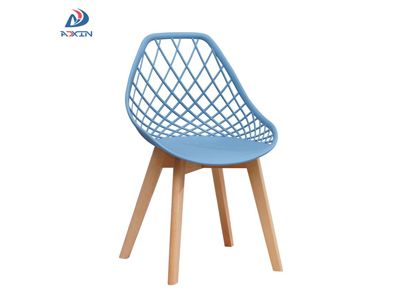The History Of Plastic Chairs And When Did They Start(1)
You know that the word "plastic" originally meant "flexible and easy to shape", and later it was considered a cheap pollutant by the community. In the last century, mankind created this revolutionary material from crude oil. This oil is then mixed with thousands of compounds, processed, and finally formed into plastic.
The History Of Plastic Chairs And When Did They Start(1)
Freeze Dried Strawberry will share this article with you.
You know that the word "plastic" originally meant "flexible and easy to shape", and later it was considered a cheap pollutant by the community.
In the last century, mankind created this revolutionary material from crude oil. This oil is then mixed with thousands of compounds, processed, and finally formed into plastic.
Plastics have already aroused people's great attention to the environment and aroused many negative emotions among the public, but this article will express our love for this material, which is undeniable.
Why? Because it gives the world a warm, soft, flexible, comfortable, and lightweight material, which provides infinite design possibilities for our industry.
Without plastic, we would not be able to make progress in the fields of medical care, transportation, infrastructure, construction, sports equipment, technology, electrical appliances, packaging, etc.! These materials even saved endangered species, such as the wild elephants in the 1970s. Mass killings.
We will discuss these later, and now let us briefly review how plastics were discovered.
The first synthetic polymer
In 1869, John Wesley Hyatt invented the first synthetic polymer. Hyatt was inspired by a New York company that offered an amazing price for anyone who could provide an ivory substitute for $10,000.
Don't confuse, the difference between polymer and plastic is that plastic is a special type of polymer. Plastic is made up of a long string of polymers, which is a matrix material made up of smaller, more uniform molecules.
Synthetic polymer
Synthetic polymers are composed of long chains of atoms, which are much longer than those found in nature. The length of these chains and their arrangement pattern makes them, well, "plastic".
These properties make synthetic polymers particularly useful, and since we learned how to create and manipulate them, polymers have become an essential part of our lives. Especially in the past 50 years, plastics have penetrated our world and changed our way of life.
Plastic is revolutionary
It is revolutionary because for the first time human beings are not restricted by natural materials. Civilization is now able to create new materials that are more adaptable than wood, metal, stone, and bone.
Plastics help protect nature from the destruction of human needs. Cheap plastics have improved living standards and made many things that we take for granted today. Without it, things like coffee cups and water bottles would not exist. Most of the items in our daily lives, except the rich, may be unaffordable to everyone.
The dawn of plastic chairs
By replacing natural materials with plastic, it makes many of our items cheaper, lighter, safer, and stronger.
In the 1970s, it was based on the original design of Canadian designer D.C. Simpson in 1946. The lightweight stackable monolithic chair led by Allibert Group and Grosfillex Group was put into production.
